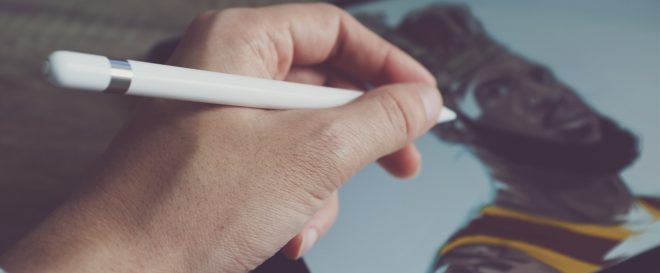How to Become a Designer: Which of the Mysterious Design Job Titles Can Be Your Dream Work?

There are hundreds of thousands job opportunities and sometimes it is quite confusing what each of them means. The market has multiple names for the same activity, as well as the same title for different types of jobs. For example, a web developer is quite the same as the back-end developer.
However, there are no strict rules, when it comes to naming certain jobs. That is why every employee or employer, who wants to hit the market, should know the commonly accepted rules to be able to understand how to apply or create a vacancy.
If you are looking for a job, make sure you read its description carefully before you send your cv editing, as sometimes the title and the content are completely different.
In this article, we tried to describe the most common web occupations to help you figure everything out. So make yourself comfortable and continue reading!
Creative/design director
A design or creative director is the one, who is in chief of the whole department of the company. This may be a firm, an agency or a design department of any enterprise. Such specialist is in charge of the development of the design, visual aspects, advertisements, relationships with the public and publications, related to design.
Such an employee is always in charge of every design-related activity and is greatly responsible for the success of the firm.
Designer
Such a broad title of an occupation often puzzles the employee, as he or she doesn’t know what to expect. Experts of Essay Area claim that many job seekers avoid such vacancies simply because they think that the employer expects them to complete all the design-related tasks.
Actually, a designer is responsible for the design of materials, applications, graphics, magazines, face of the firm, books, titles and their concepts. This occupation surely means that the designer will have to deal with every visual aspect of the company, which often means late hours and lots of responsibilities from multiple fields. Designers can be divided into entry-level and senior ones.
Entry-level designer
The entry-level designer is the one, who has just finished school or college and has only a year or two of experience. This job position means that the employee needs mentoring, control and assistance.
Usually, such designer complete simple tasks, which regular and more experienced designers don’t have time for. Salary of such a designer is significantly lower but the number of responsibilities is also less stressful and tiresome.
Senior designer
If the company requires a senior designer, it means that they are looking for an experienced specialist, who is able to guide the whole process from the concept to the design.
Some companies require a senior designer to mentor entry-level specialists without actually being involved into the process. On contrary, some employers require a senior designer to make all the decisions on the design, generate ideas and accept final projects and drafts. Making final decisions is the key responsibility of the senior developer.
Solo designer
A solo designer is a freelance specialist, who doesn’t have any employees and doesn’t spend work hours at the office. Such designer works on his own from home or from a coworking space.
Such specialists usually take projects without staying at the same company for long.
Web designer
A web designer is the one, who is responsible for the visual side of the website. He works on the site’s look, usability and interface. He also deals with navigation and the picture.
Thanks to such specialists, users are able to enjoy their stay on the website and can easily jump from one page of the website to another.
Content developer
Content developer is a relatively new specialty. However, according to an essay writing services more and more employers hire professional content developers.
They are also called web editors and writers and are responsible for all the materials on the site. This includes text, audio/video, graphics and so on. Such specialists fill in the website pages with useful blog posts, ads, descriptions of the product and so on.
Print production artist
A print production artist is a specialist, who tightly cooperates with a designer and follows his instructions on the color, type and concept of the design. Such artist creates a layout, using QuarkXPress, Photoshop, InDesign, Illustrator and other graphical programs.
A print production artist also works with final files, which will accurately fit in the project and will look organic.
User Researcher
It is impossible to underestimate the importance of a user researcher. This relatively new occupation plays a huge role in the success of the firm, as it helps the business owner to understand the needs and desires of the user, as well as his motivation and behavior.
In such a way, the researcher can advocate for the audience and tell the design team what solutions will be beneficial to make the item attractive. User researcher is closely related to the data and business analysis and research teams, which study the market.
If the company is big and has separate teams for design and development, user researchers may work independently and remotely.
Product Designer
This occupation is becoming more and more popular but still confuses employers, as there are no strict rules and responsibilities it has to follow. Even if you ask two hiring managers what this title is about, they will hardly give the same answer.
It is more likely a collective term, which includes a variety of responsibilities and roles. It can be related to the UX design, strategy of the content, creating drafts, analyzing market and so on. Such specialists should possess lots of skills and be able to perform in multiple spheres at the same time.
Front-end/interface developer
A front-end developer should have a deep knowledge of Javascript, CSS, HTML and frameworks. Such specialist is responsible for the visual production of the website and should be able to possess both programming and design skills.
An interface developer is in charge of the physical programming and designing of an interface. It has quite similar features with UX design and both specialties are closely related. This means that an UX designer knows elements of a front-end design and vice versa.
Back-end developer
You may wonder what a back-end developer has to do with design. Actually, a developer doesn’t have any responsibilities, connected with visual effects or interface. However, it is impossible to imagine a modern website, a magazine or even an online advertisement without a strong and talented developer behind it.
A back-end developer is a person, who works on the website’s stuffing and its technical aspects. He needs to master such programming languages, as Ruby, C#, PHP and VB.Net.
Art director
An art director is the inspirer of the project, who sets the tone and gives a direction for the whole work. This may include the colors of the starting page, the dressing of the actors, lighting of a video commercial or a graphic palette of the website.
In most of the cases, an art director is a senior specialist, who started from being a designer. Although in smaller companies, the responsibilities of an art director may be completed by a graphic designer, who works with the website or printed editions. For those, who want to climb the career ladder, becoming an art director is the step towards becoming a creative director, the leading design position on the market.
User Interface Designer
A user interface designer is tightly connected with the user experience, although has its distinct features and peculiarities. Such designers are closely related with the feel and look of the pages, their impact on the user and impression of the audience.
UI specialists are the one to decide where certain bars should be places, what color palettes should be chosen, what fonts and styles to select, and so on. In most of the companies, UI and UX designers are united into one occupation, performing the same responsibilities.
Those, who want to become user interface designers, should know elements of typography, practices of layouts, patterns of interface and of course visual design.
Interaction Designer
Interaction design is a relatively new definition on the market and it is responsible for relationships of the product and the final user. The whole point of such an occupation lies in the details of the user interface. This may include aesthetics of the design, animation and various top-notch features, which attract the user.
Such occupation may not be a right choice for those, who like diving into the research and working on the logics of the website. It is more of a choice for specialists, who love interacting with the user and tightening the bonds between the audience and the product.
An interaction designer should master HTML, CSS, Javascript, as well as animation and visual design.
Now you know all the main features of top design occupations and can distinguish an art director from a web designer. They are all closely related but have its specific features. If you want to switch jobs or learn something new, consult our list and pick the specialty you find the most appealing.



